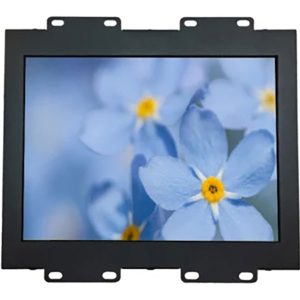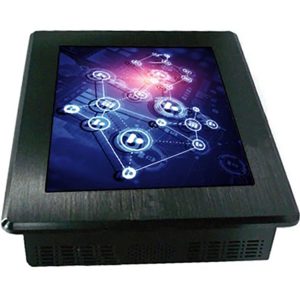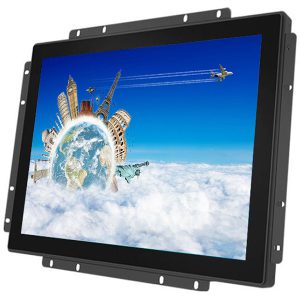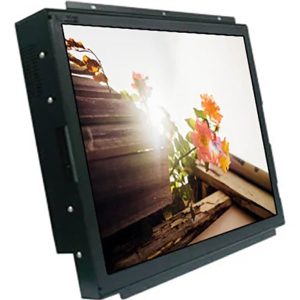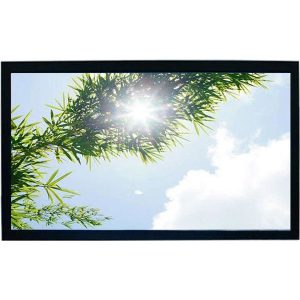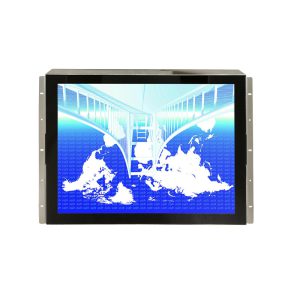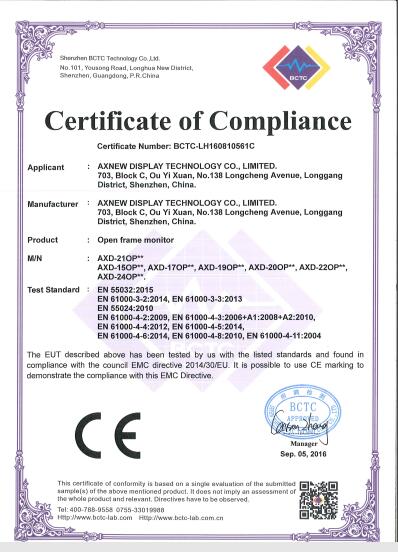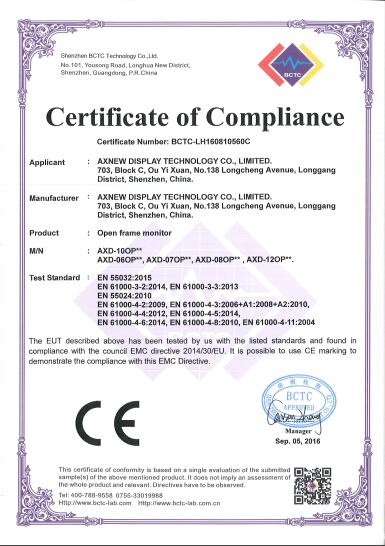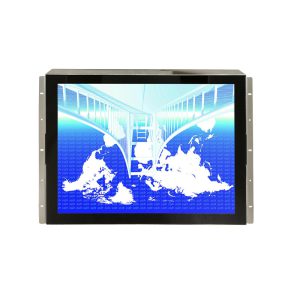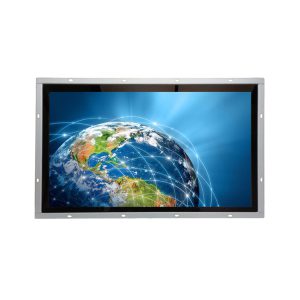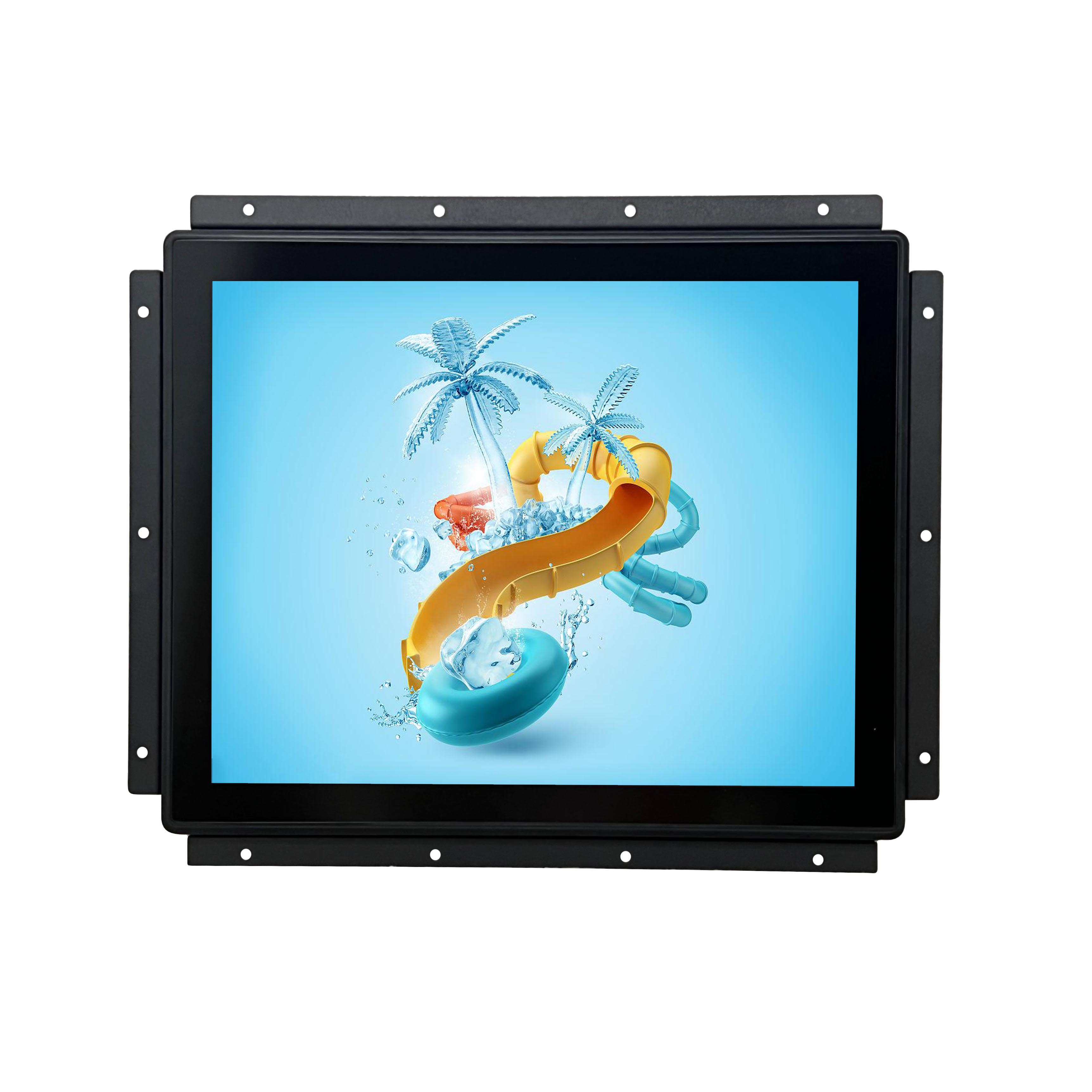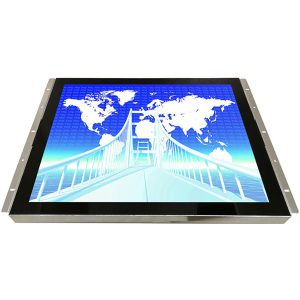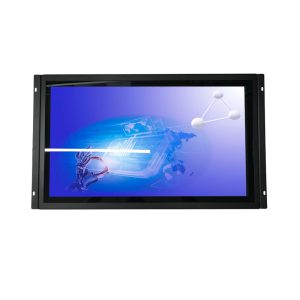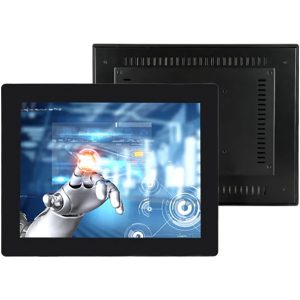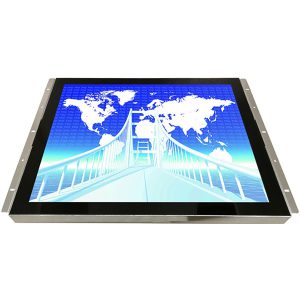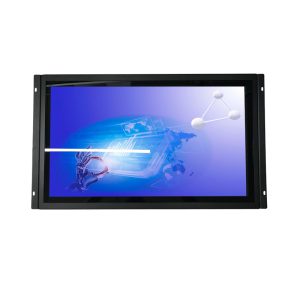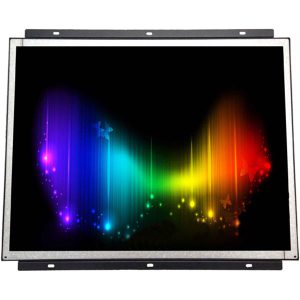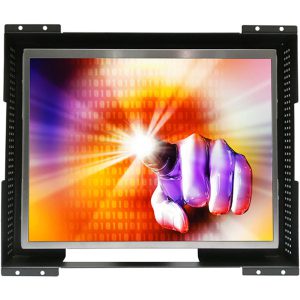Detailed Product Description
High brightness monitor
What is high brightness monitor | What is the highest brightness nits monitor? | What is the maximum brightness of a monitor? |
What's a good brightness monitor? | Does high brightness affect eyes? | Is brighter monitor better for eyes? |
What brightness is best for eyes? | Specifications of high brightness monitor | Technology of high brightness monitor |
Sizes for high brightness monitor | Applications of high brightness monitor | Features of high brightness monitor |
What is high brightness monitor
A high brightness monitor also known as a sunlight readable monitor or VHB monitor, is a computer monitor designed to operate in very bright environments, for example in broad daylight. It is a display device that is designed to produce a significantly brighter image compared to standard monitors. These monitors are often used in environments where ambient light is high, such as outdoor settings or brightly lit indoor spaces. The increased brightness helps improve visibility and ensures that the displayed content remains clear and readable even in challenging lighting conditions.
Advantages of high brightness monitor
- Enhanced Visibility in Bright Environments
- Sunlight Readability
- Optimal for Outdoor Use
- Improved Contrast Ratios
- Wide Viewing Angles
- Interactive Displays in Public Areas
- Reduced Eyestrain
- Versatility in Applications
- Dynamic Digital Signage
- Ruggedized Options for Harsh Environments
- Energy Efficiency
- Customization Options
- Extended Lifespan
- Adaptability to Changing Lighting Conditions
- Effective for Advertising and Promotion
|
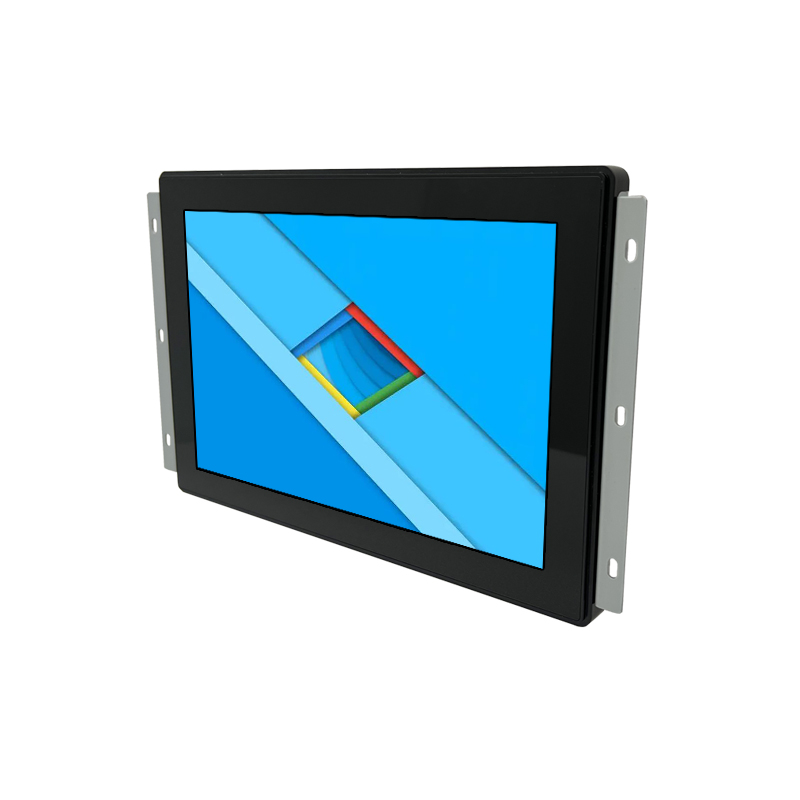
|
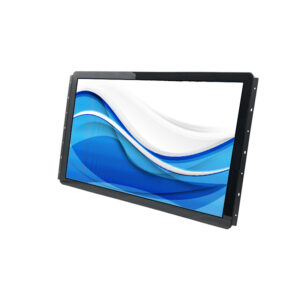
| 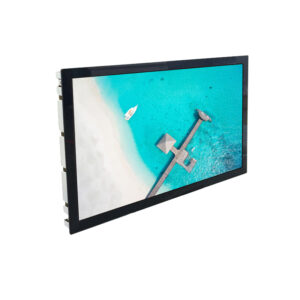
|
Specifications of high brightness monitor
Here is a detailed specification table for a high brightness monitor
| Dimension | Description |
|---|
| Brightness Level | Measured in nits, indicating the monitor's brightness level. |
| HDR Support | Whether the monitor supports High Dynamic Range (HDR) technology to enhance color and contrast. |
| Color Accuracy | Indicates the monitor's color accuracy, typically expressed in bit depth and color gamut. |
| Refresh Rate | Measures how many times the monitor screen refreshes per second, usually expressed in Hertz (Hz). |
| Response Time | Represents the time it takes for pixels to switch from one color to another, typically measured in milliseconds (ms). |
| Resolution | Specifies the number of pixels on the screen, determining the level of detail. Common resolutions include Full HD (1080p), 4K, etc. |
| Panel Type | Indicates the type of display panel used, such as IPS, TN, or OLED, impacting viewing angles and color reproduction. |
| Backlighting Technology | Describes the technology used for backlighting, which influences brightness and contrast. Examples include LED and OLED. |
| Screen Size | Specifies the physical size of the monitor, typically measured diagonally in inches or centimeters. |
| Aspect Ratio | Describes the proportional relationship between the monitor's width and height. Common ratios include 16:9 and 21:9. |
| Connectivity Options | Lists the available ports for connecting external devices, such as HDMI, DisplayPort, USB-C, etc. |
| Adjustability Features | Indicates the ergonomic features like tilt, swivel, and height adjustment for customizable user comfort. |
| Energy Efficiency Rating | Describes the energy efficiency of the monitor, often represented by an Energy Star rating or similar certification. |
| Environmental Certifications | Specifies any environmental certifications the monitor may have, demonstrating commitment to sustainability. |
| User Interface (UI) | Describes the on-screen menu system and controls for adjusting settings and configurations. |
| Special Features | Lists any additional features, such as built-in speakers, USB hubs, or specific gaming features. |
| Warranty Period | Indicates the duration of the manufacturer's warranty coverage for the monitor. |
| User Ratings and Reviews | Summarizes user feedback and reviews, providing insights into user satisfaction and common issues. |
What is the highest brightness nits monitor?Some go up to 2,500 nits of brightness. This makes them far brighter than standard LCD monitors. Specifically, consumer or commercial-grade monitors typically offer only 150 to 300 nits brightness. | What is the maximum brightness of a monitor?Monitors have a standard brightness if they have a peak brightness between 300 and 350 nits. Monitors have a high brightness if they have a peak brightness above 350 nits. |
What's a good brightness monitor?A peak brightness above 300 cd/m² is considered good, and enough to overcome glare in most instances, but you might need higher if the monitor doesn't handle reflections well or if there's direct sunlight shining on the screen. | Does high brightness affect eyes?High luminance is not itself a threat to eye health. Because the iris and pupil regulate how much light enters the eye, external brightness factors are rarely an issue. However, even though brighter light sources are not directly harmful, inappropriate lighting can result in visual symptoms. |
How important is brightness on a monitor?A good viewing angle is imperative for convenient screen usage, and your viewing angle has a direct correlation with brightness. Therefore, the brighter your screen, the better it gets. | What brightness is best for eyes?Review your display brightness setting, this can greatly reduce the strain on your eyes. For example, in an office with normal brightness of 300-500 lux, the display brightness should be adjusted to around 100-150 cd/m2 |

Features:High luminance for enhanced visibility Wide viewing angles for optimal viewing from various positions Rugged and durable construction for reliability in harsh environments Advanced display technologies for improved image quality Flexible connectivity options for compatibility with various devices
| Applications: |
Types of high brightness monitor
Outdoor digital signage displays Transportation displays Industrial control room monitors Retail digital displays Marine navigation screens Public information kiosks Advertising billboards Outdoor event screens Stadium scoreboards Emergency notification displays
| Sizes of high brightness industrial monitor10 inches 12 inches 15 inches 17 inches 19 inches
|
What are technologys and manufacturing process of high brightness monitor
Technology:LED backlighting Advanced LCD panel technology (e.g., IPS, TFT-LCD) High-brightness display components Ambient light sensors for automatic brightness adjustment Enhanced heat dissipation mechanisms | Process:Selection of high-quality display components Integration of LED backlighting for increased brightness Calibration of color temperature and brightness levels Implementation of advanced display technologies for optimal image quality Incorporation of heat dissipation mechanisms to regulate temperature Quality control and testing to ensure reliability and performance |
Hot topics for high brightness monitor
1. How to choosing the Right High Brightness Monitor for Outdoor Signage
1.1 Introduction: Selecting a high brightness monitor for outdoor signage involves considering factors such as luminance levels, durability, and suitability for specific environmental conditions.
1.2 Details:
1.2.1 Luminance Levels: Understanding the required nits for optimal visibility in varying daylight conditions.
1.2.2 Durability Features: Exploring ruggedized options with weatherproof enclosures and resistance to dust and water.
1.2.3 Energy Efficiency: Considering energy-efficient models that maintain high brightness without compromising sustainability.
2. Applications of High Brightness Monitors in Transportation
2.1 Introduction: High brightness monitors play a crucial role in transportation settings, enhancing visibility for passengers and operators in vehicles and transportation hubs.
2.2 Details:
2.2.1 In-Vehicle Displays: Exploring how high brightness monitors improve visibility for navigation, entertainment, and informational displays within vehicles.
2.2.2 Transportation Hubs: Discussing the use of these monitors in airports, train stations, and bus terminals for information displays and wayfinding.
3. Maximizing Impact: High Brightness Monitors in Retail Environments
3.1 Introduction: Examining the significance of high brightness monitors in retail for impactful advertising and promotion, especially in well-lit store environments.
3.2 Details:
3.2.1 Digital Signage Displays: Discussing how high brightness monitors enhance the visibility of promotional content in retail settings.
3.2.2 Customer Engagement: Exploring how these monitors contribute to creating engaging customer experiences through clear and vibrant displays.
4. Enhancing Healthcare Communication with High Brightness Monitors
4.1 Introduction: Highlighting the role of high brightness monitors in healthcare settings for clear communication and information dissemination.
4.2 Details:
4.2.1 Digital Signage in Hospitals: Exploring how these monitors are used for patient information, wayfinding, and important announcements.
4.2.2 Visibility in Bright Spaces: Addressing the need for high brightness in well-lit healthcare environments to ensure readability.
5. Gaming Excellence: High Brightness Monitors for Immersive Gameplay
5.1 Introduction: Discussing the advantages of high brightness monitors in gaming setups for improved visibility and immersive gaming experiences.
5.2 Details:
5.2.1 Enhanced Contrast: Exploring how high brightness contributes to better contrast ratios, crucial for gaming visuals.
5.2.2 Adaptability to Different Lighting: Discussing the importance of adjustable brightness in accommodating various gaming environments.
6.Navigating Public Spaces: Wayfinding Solutions with High Brightness Monitors
6.1 Introduction: Exploring the role of high brightness monitors in wayfinding systems, ensuring clear navigation in public spaces.
6.2 Details:
6.2.1 Visibility in Sunlight: Discussing how high brightness monitors excel in outdoor and well-lit areas where wayfinding is critical.
6.2.2 Interactive Displays: Highlighting the use of interactive high brightness displays for engaging wayfinding experiences.
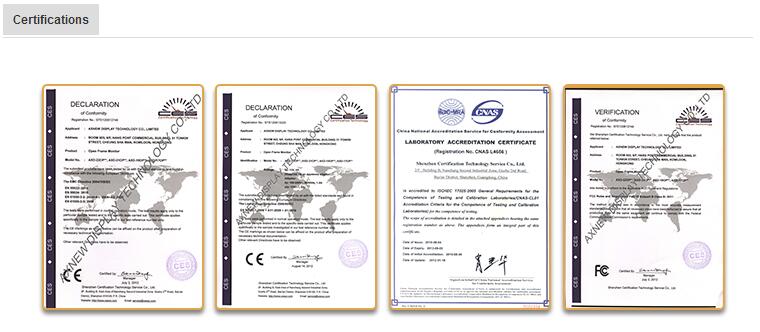
Our stable suppliers are mainly Auo, sharp, Chimei, Boe, samsung,Lg panels.
We are practical and realistic to each product’s quality and characteristics.
OEM or small quantities customized orders are available for us.
High Brightness Level in Nits
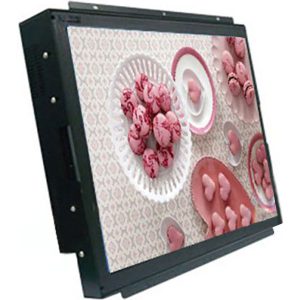
| The term "Nits" refers to a unit of measurement for brightness or luminance. It represents one candela per square meter (cd/m²). When discussing the brightness level of a display, particularly a monitor or screen, the measurement is often expressed in Nits.
For high-end monitors, especially those designed for HDR (High Dynamic Range) content, the brightness levels are typically higher, often ranging from 400 nits to well over 1,000 nits. HDR content demands higher brightness to display a wider dynamic range of colors and contrast.
Here's a general classification of brightness levels in nits:
Standard Brightness (200-300 nits): Suitable for typical office use and indoor environments with controlled lighting.
Enhanced Brightness (300-500 nits): Provides a brighter display, which can be beneficial for brighter indoor environments or when dealing with reflective surfaces.
High Brightness (500-1,000 nits): Common for HDR-capable displays, offering enhanced brightness for a more vivid and dynamic visual experience. Very High Brightness (1,000+ nits): Often found in premium displays, particularly those designed for professional content creation, gaming, or HDR video playback. It's important to note that while higher brightness levels can be advantageous for certain applications, such as HDR content or outdoor use, the ideal brightness depends on factors like the viewing environment and user preferences. Additionally, prolonged exposure to extremely high brightness levels may contribute to eye strain, so it's advisable to adjust the brightness based on individual comfort and ambient lighting conditions |
Brightness range of high brightness monitors and their potential impact on the eyes
| Brightness Range (nits) | Impact on Eyes |
1000 - 1500 | Low |
1500 - 2000 | Moderate |
2000 - 2500 | High |
2500 - 3000 | Very High |
3000 and above | Extremely High |
Is high brightness better for your eyes and How many nits of brightness are good for eyes?
1000 - 1500 nits: Monitors within this range are considered high brightness but have a relatively low impact on the eyes. They are suitable for indoor or moderately lit outdoor environments.
1500 - 2000 nits: Brightness within this range has a moderate impact on the eyes. Prolonged exposure may lead to eye fatigue and discomfort. They are suitable for short-term use or in environments where high visibility is required.
2000 - 2500 nits: Monitors with brightness in this range have a high impact on the eyes. Prolonged exposure may cause eye fatigue, glare, and discomfort. They are suitable for outdoor environments or special situations requiring high brightness, with exposure limited to shorter durations.
2500 - 3000 nits: Brightness in this range is very high and may result in increased eye fatigue, glare, and discomfort. They are recommended for specialized applications where extremely high brightness is required, with appropriate eye protection measures taken to minimize discomfort.
3000 and above nits: Monitors with brightness exceeding 3000 nits have an extremely high impact on the eyes and may lead to severe eye fatigue, glare, discomfort, and potential eye damage. They are suitable for specific applications where extremely high brightness is essential, with strict eye protection measures such as wearing sunglasses or using screen filters.
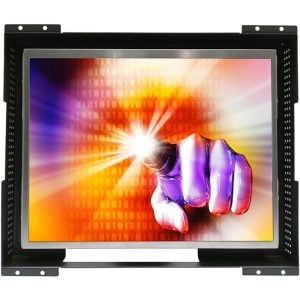 | 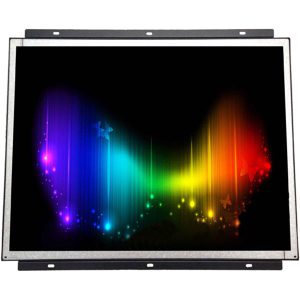
|
High Brightness Monitor Price
The following is a price range table of high brightness monitor of corresponding sizes that we provide. The actual price will vary due to customization options and specifications. Which one can meet your needs? Please contact us in time to confirm.
| Size | Price Range | Price Remarks |
10 inches | $300 - $600 | Smaller size and lower resolution are cheaper. |
12 inches | $400 - $800 | Moderate size and resolution offer moderate prices. |
15 inches | $500 - $1000 | Medium size and higher resolution result in higher prices. |
17 inches | $600 - $1200 | Larger size and higher resolution lead to higher prices. |
19 inches | $700 - $1500 | Larger size and higher resolution result in higher prices. |
FAQS about high brightness monitor
What is a high brightness monitor?
A high brightness monitor is a display that offers increased luminance or brightness levels compared to standard monitors. This feature is beneficial for tasks such as professional photo and video editing, outdoor use, or environments with high ambient light.
How is brightness measured in monitors?
Brightness in monitors is measured in nits. One nit is equivalent to one candela per square meter (cd/m²). The higher the nit value, the brighter the display.
What are common applications for high brightness monitors?
High brightness monitors are commonly used in outdoor digital signage, professional video editing, medical imaging, and any environment where a standard monitor might be affected by bright ambient light.
Are high brightness monitors suitable for gaming?
While high brightness is not a primary concern for gaming, some gamers prefer monitors with increased brightness for better visibility in well-lit rooms or to enhance HDR gaming experiences.
Do high brightness monitors consume more power?
Generally, yes. Higher brightness levels usually require more power to drive the backlight. However, advancements in technology have led to more energy-efficient high brightness monitors.
Can high brightness monitors be used for regular office work?
Yes, high brightness monitors can be used for regular office work. However, it's essential to adjust the brightness to a comfortable level to avoid eye strain.
Do all high brightness monitors support HDR?
Not necessarily. While many high brightness monitors support High Dynamic Range (HDR), it's crucial to check the specifications of a specific monitor to confirm HDR compatibility.
What is the recommended brightness level for different tasks?
The recommended brightness level varies depending on the task and ambient lighting conditions. For general use, a brightness level of around 250 to 350 nits is often sufficient. For tasks like photo editing or HDR content creation, higher brightness levels may be desirable.
Are there any downsides to high brightness monitors?
High brightness monitors can be more expensive, consume more power, and may not be necessary for standard indoor use. Additionally, extremely high brightness levels may contribute to eye strain if not adjusted properly.
Can high brightness monitors be calibrated?
Yes, most high brightness monitors can be calibrated to ensure accurate color representation. Calibration tools help adjust color settings, gamma, and other parameters to achieve optimal performance for specific tasks.


